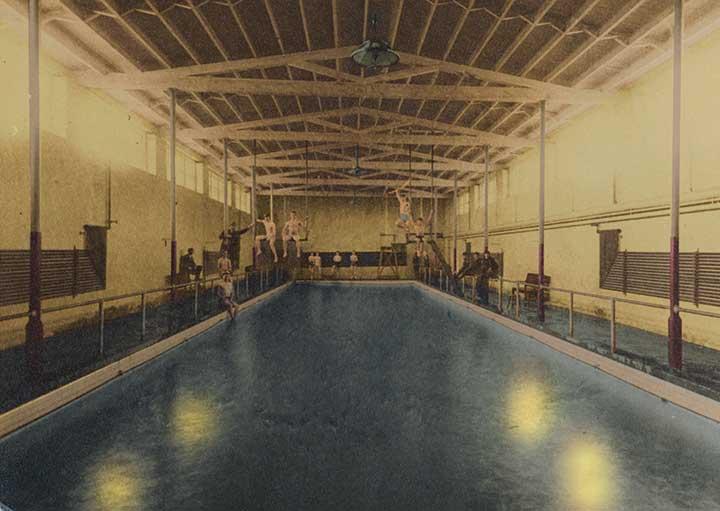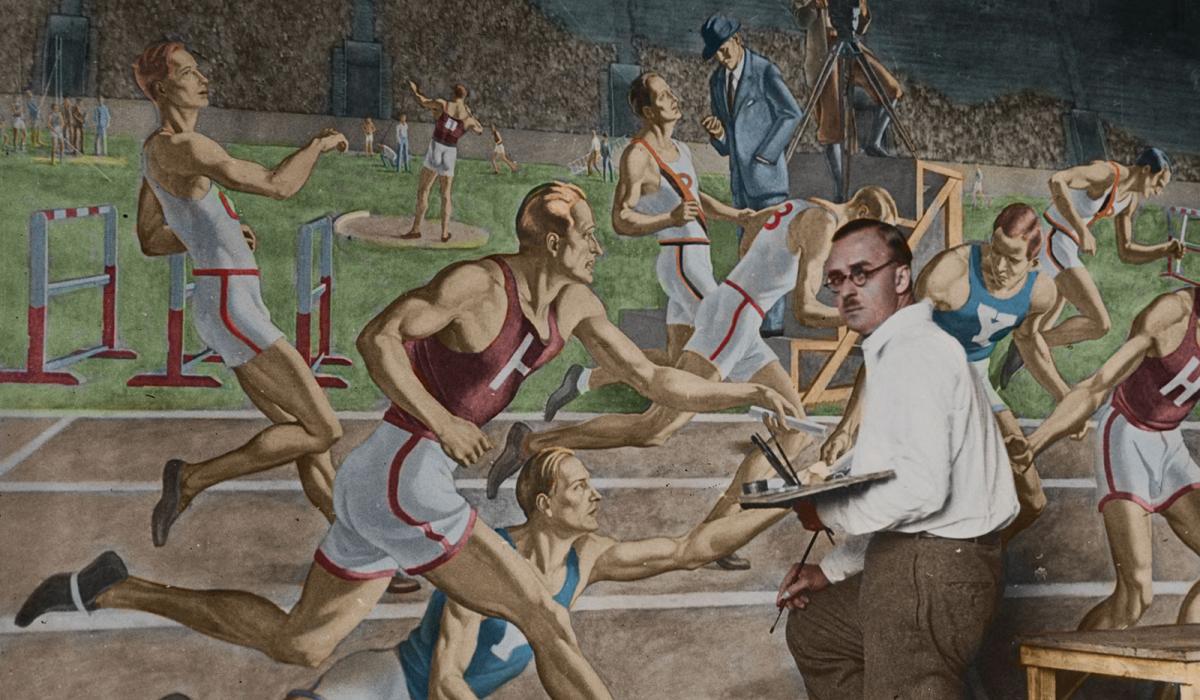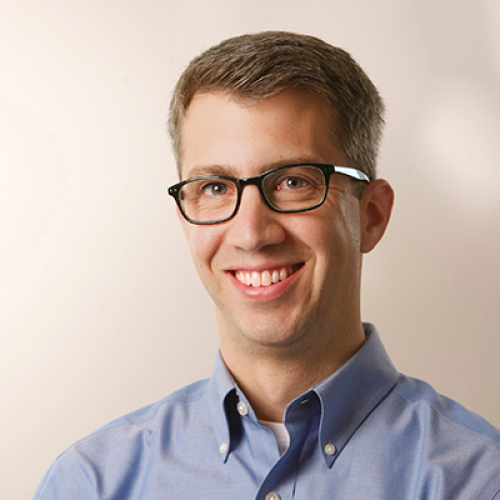As the University continues to grow, Reunions visitors occasionally marvel that some parts of campus appear virtually unchanged. But even within the more historic parcels of Princeton, some scenes have been left behind. In this photo essay, we highlight eight images of that “lost Princeton,” in living color. While we’ve done our best to present accurate colorization, these photos are an interpretation, based on the best information available.
Photos from the University Archives, Princeton University Library
Colorization by Steven Veach
Athletics as Art (above)
No students were harmed when fire destroyed the University Gymnasium in May 1944, but there were a few sentimental casualties of the blaze: trophies and memorabilia, collected over several decades; and 13 murals of Princeton athletics that adorned the trophy room. Installed in 1935, the murals aimed “to catch the spirit of each sport at its most dramatic moment,” according to artist William Yarrow, seen here. When Yarrow died in 1941, three years before the fire, The New York Times listed the Princeton murals among his most important works.
Mail Call
World War II brought significant changes to campus life. In this photo from our May 21, 1943, issue, student-soldiers from the Army Specialized Training Program distribute a batch of letters under the blooming trees of Henry Hall. By November of that year, members of the Army, Navy, and Marines would make up about 80 percent of the students on campus, according to figures compiled by the University Archives staff.

School Ties
In 1950s advertisements, the U-Store offered “Everything the College Man Needs,” with services ranging from typewriter and camera repair to clothing and haberdashery. Here, a salesman and customer examine the selection of vests and ties at the store’s University Place location.
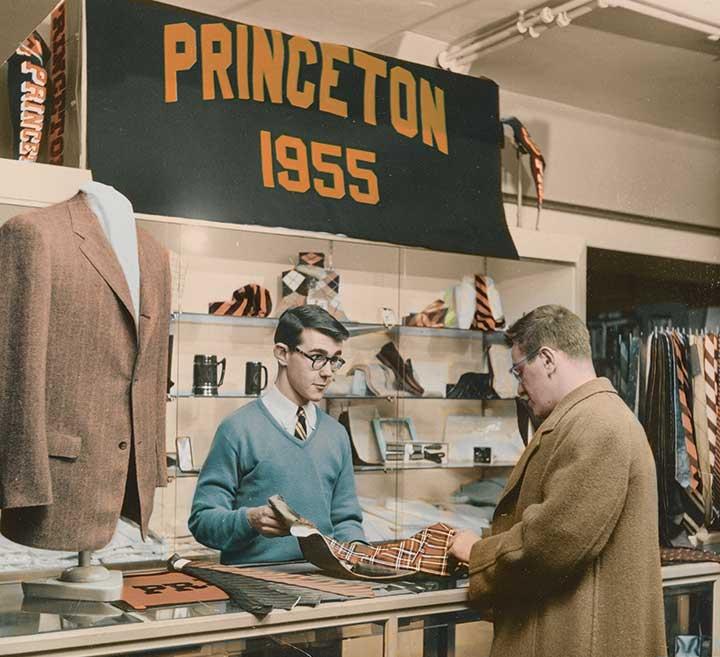
Life in The Lab
The chemistry students pictured here likely did their experiments in the Class of 1887 Laboratory, which stood on the site currently occupied by Firestone Library. The department was booming at the time: 280 students applied for the general chemistry course at the start of the 1912–13 academic year, more than 15 percent of the undergraduate student body.
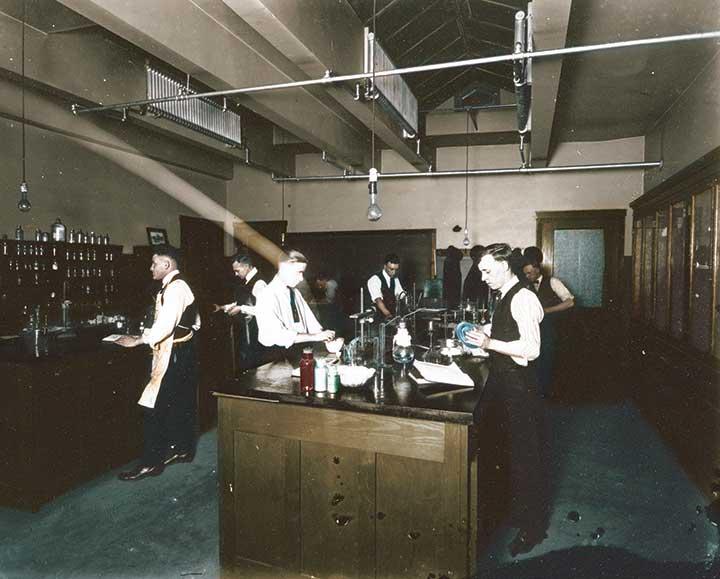
All Aboard
Yes, the Princeton Junction & Back line once delivered passengers to the foot of the Blair Hall steps. But the train actually predates Blair by more than three decades. Completed in 1865, the well-traveled spur was originally part of the Camden and Amboy Railroad. This image, dated 1888, shows two “lost” buildings in the background: Bonner-Marquand Gymnasium, with the triangular spires on the left; and Reunion Hall, at center, a dormitory that lasted until 1965. Witherspoon Hall is on the right, beyond the train platform.

Stump Speech
When undergraduates invited former Minnesota governor and Republican presidential candidate Harold E. Stassen to campus in 1948, a controversy erupted — not about the speech itself but about where to host it. Student organizers requested the new Dillon Gymnasium; administrators offered Alexander Hall.
They compromised, holding the event on the steps of Blair Hall on a chilly night in late April. Thousands came to hear Stassen pitch his ideas for American foreign policy, according to PAW’s coverage. Thomas Dewey earned the Republican nomination that June, but Stassen would run again, seeking his party’s nomination nine times between 1944 and 1988.

Ground Strokes
For Princetonians in the 1920s and ’30s, the opening of the tennis courts was a rite of spring. At one point, the University maintained 38 courts on campus. The courts in this image, likely captured from a window in Patton Hall in the early 1920s, remained in use after the addition of Eno Hall (1924) and the second McCosh Infirmary (1925). Guyot Hall is seen in the background. The courts were relocated in the late 1950s to make room for the “New Quadrangle” dormitories, including Gauss, 1939, Wilcox, and Dodge-Osborn halls.
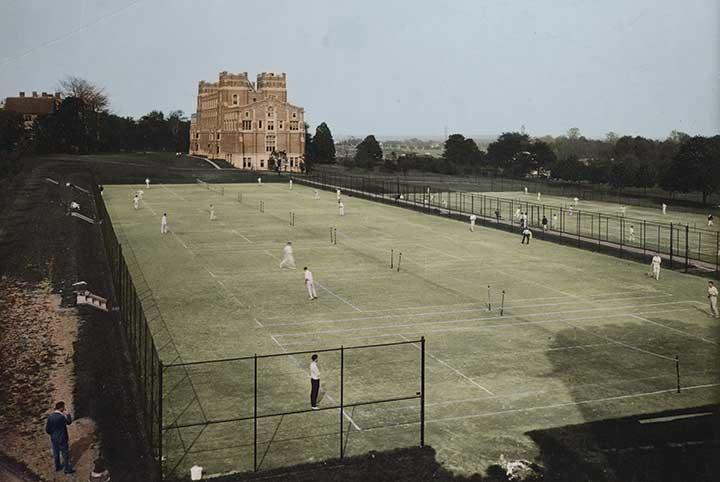
Jumping In
Students prepare to make a splash at Brokaw Memorial Pool sometime in the early 1900s. The pool and attached field house were among the athletics facilities donated to the University by the father of Frederick Brokaw, Class of 1892, after his son’s tragic death in the summer of 1891, when he drowned while trying to save a young woman on the Jersey shore. Located on what was then the southern edge of campus, the building was razed in 1946 to make room for Dillon Gymnasium.
